Chikin-Ha: A Secret Nature Park Hidden In The Heart Of The Mayan Riviera Jungle
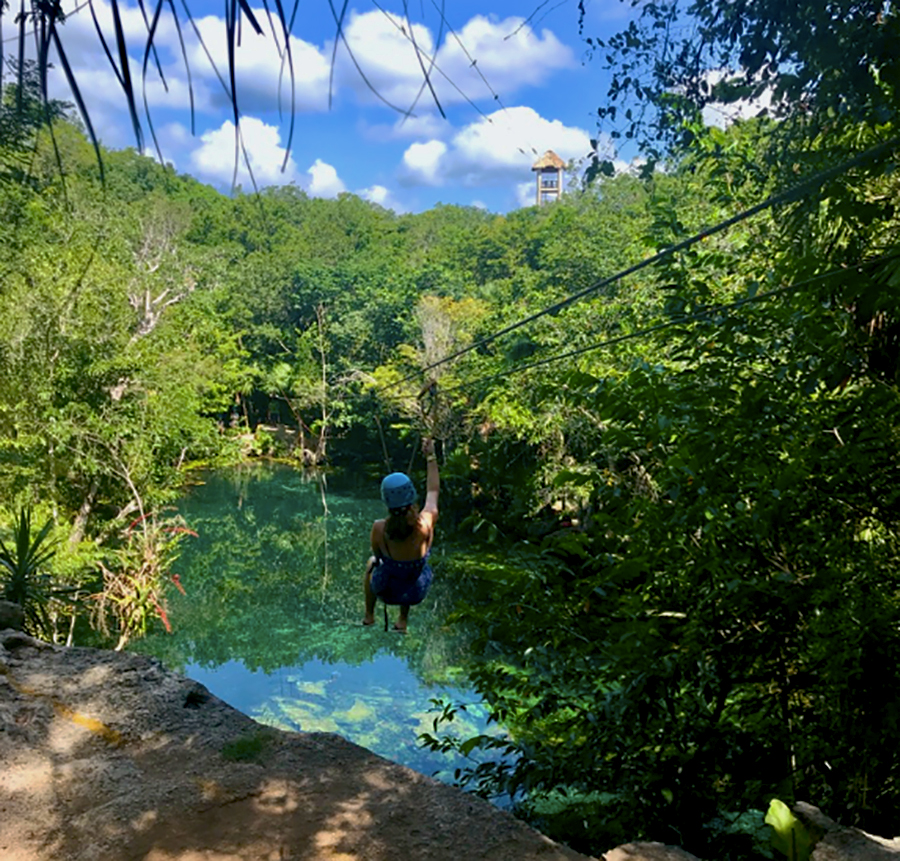
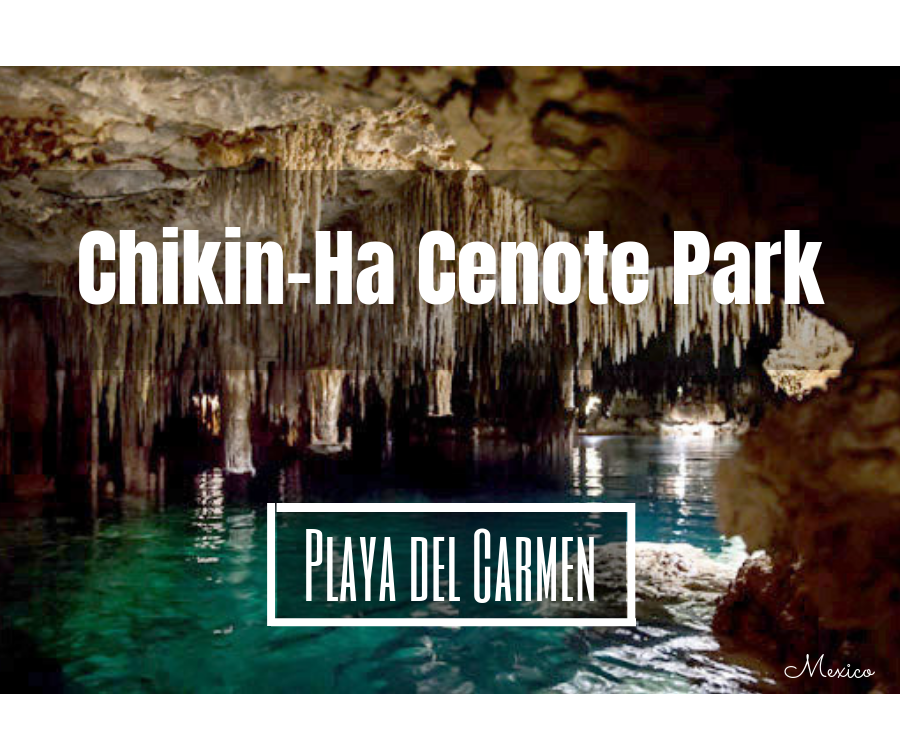
Through Sustainable Tourism, Passionate Guides at Cenote Chikin-Ha Park Introduce Us To Some Of The Most Spectacular Nature On The Planet
One of the top Riviera Maya activities, especially when the heat turns up from May to September, is taking a dip in the cool waters of a cenote. These extraordinary sinkholes have been around for thousands of years and enhance the already extraordinary beauty of Mexico’s Yucatan Peninsula.
What Is A Cenote?
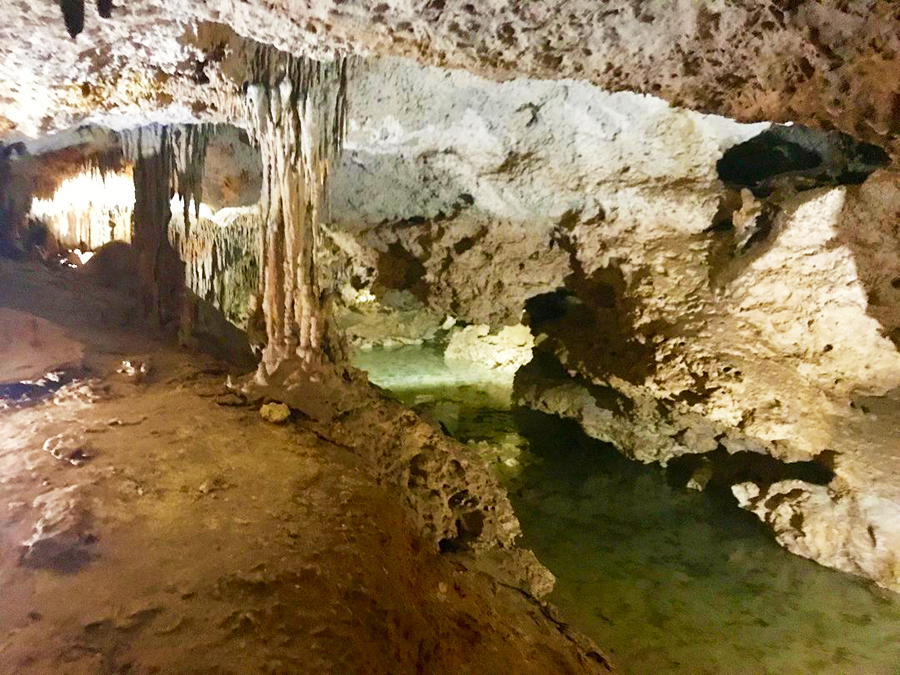
At 8:30 a.m., in the most peaceful of jungle settings, our expedition begins at Chikin-Ha Park (20 minutes south of Playa del Carmen). After selecting a bike for the first part of the tour, we peddle alongside David, our enthusiastic guide. As we approach the first of two dry caves, the kids are glued to David’s side as he shares with us the fascinating history behind a cenote. The Yucatan Peninsula, once an expansive coral colony beneath the sea, became exposed when the water receded during the Ice Age. Unable to survive, the coral fossilized to form a limestone platform about one mile thick. Throughout the years, acidic rainwater caused the porous limestone to collapse, forming thousands of remarkable caverns. At the end of the Ice Age, the glaciers melted and flooded these caves resulting in crystal clear, turquoise-tinted pools and the world’s longest underground river system.
David goes on to explain that many of the Mayan cities were constructed around cenotes, as they provided a freshwater source for the community. Moreover, these unique wells were considered a sacred passageway to the Maya underworld. Many human sacrifices were offered to the gods, believed to reside within the dark depths of these geological phenomena. In 2001, the oldest remains in the Americas were found in Quintana Roo and date back some 13000 years.
Chikin-Ha Park’s Captivating Caves
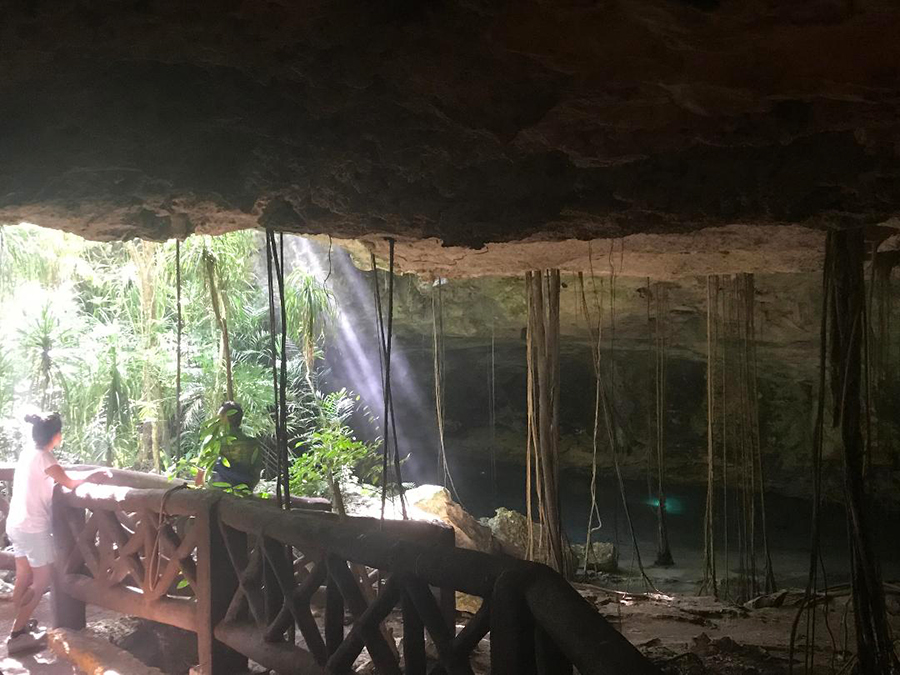
Throughout the caves, lamps shine spotlights on the hundreds of dripping stalactite formations. As we regress back to the steps of the entrance, he points out glow-worms living within the crevices; the children are in awe.
Tip:
The early tour is highly recommended as it feels as though you have the serene jungle sanctuary all to yourself. Wear natural mosquito repellent for the dry cave exploration portion of the excursion. Regular repellents and sunscreens are prohibited.
Partaking In A Time-Honored Mayan Tradition
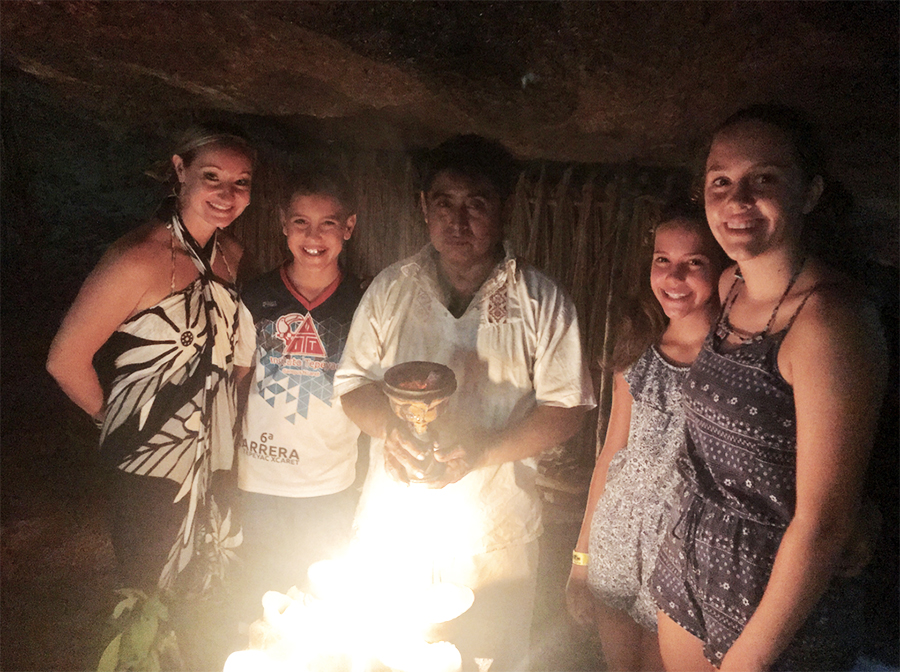
The third stop takes us to a breathtaking pita-shaped cave. The sun’s rays pierce through the lush wilderness and paint a mystical scene. From the branches of massive Ceiba trees, we hear the calls of bright orange and turquoise Mot Mot birds. Partially concealed by flowing vines is the entrance to the cave. David pushes aside the natural curtain of flowing vines and instructs us to follow a candle-lit aisle.
At the end of the pathway, a Shaman stands at an altar with a welcoming smile. The Mayan priest motions for us to sit down. A beautiful cleansing and gratitude ceremony commences, aiming to rid us of any negative feelings we may be harboring.
Each of us takes turns placing copal incense inside the smoking chalice. As we do so, we make a silent, intention for the betterment of the universe. In Mayan, the Shaman gives thanks to the earth for all it provides and sends our blessings (from the smoking chalice) up through a small opening in the ceiling of the cave. The sacred ceremony seems to work and we are left feeling a deep sense of peace.
A View From The Top

We return the bikes, grab our towels from the lockers, and proceed to the zip lines. Traveling with an apprehensive nine-year-old, we were relieved that after a quick survey, she determines to give the modest zip line circuit a go. One by one, we soar over blue-green ponds and finally above the vast canopy of the jungle. The powder blue sky and the verdant vista from the hundred and twenty-meter long zip line are extraordinary. Everyone in our group is eager for a second round on the circuit.
Tip:
You are allowed to bring your camera or smart phone to take photos. They also have a professional photographer escorting you through the park. The photo package is $65.00 USD. The park operates on a cash–only basis. So even if you skip the photo package, you will need cash for the entrance fees, refundable locker deposit ($50 pesos) and tips.
The tour concludes with a refreshing swim in two unique cenotes. With our snorkel gear and the help of David’s expert eye, we are able to spot the catfish, turtles, and divers swimming beneath us in the picturesque sinkholes. He invites us to stay and use the facilities as long as we like. But our stomachs are signaling that it is time to eat.
We opt to dine at La Buena Vida in Akumal, one of our favorite seaside beach clubs in the Riviera Maya. The restaurant and bar sits facing the Caribbean and offers bean bag chairs, plenty of tables with a view, and hammocks tied to coconut palms. This laid-back little piece of heaven is the ideal end to our adventurous morning.
Rave Reviews!
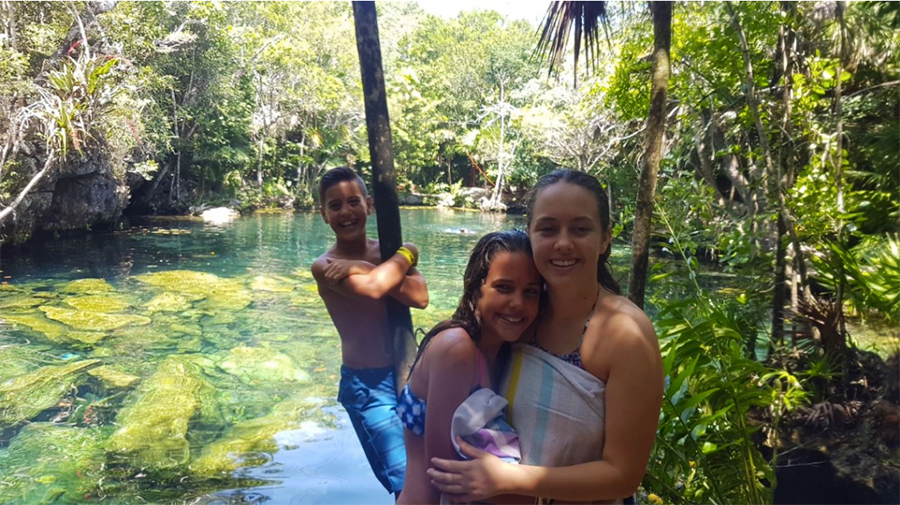
Without a doubt, you can expect similarly inspiring encounters at any one of the many eco-parks in Playa del Carmen. But above and beyond the awesome nature, this half-day excursion hits the bullseye for affordable, family-friendly fun. For $650 pesos ($36 USD) each, our group of five was pleasantly surprised with the personalization of the tour complete with cultural aspects, history, and thrilling elements. For these reasons, our Chikin-ha experience emphatically receives 10 thumbs up!
Tip:
Book online in advance by PayPal and save 15%. There are various packages to choose from. The basic entrance fee is $350 pesos and does not include the zip lines. The full package included bikes, snorkel gear, and all activities (dry caves and rappelling, cenote swims, zip lines and Mayan ceremony.) In addition, you have the option to pay $100 pesos per person for a buffet lunch in the on-site restaurant.
